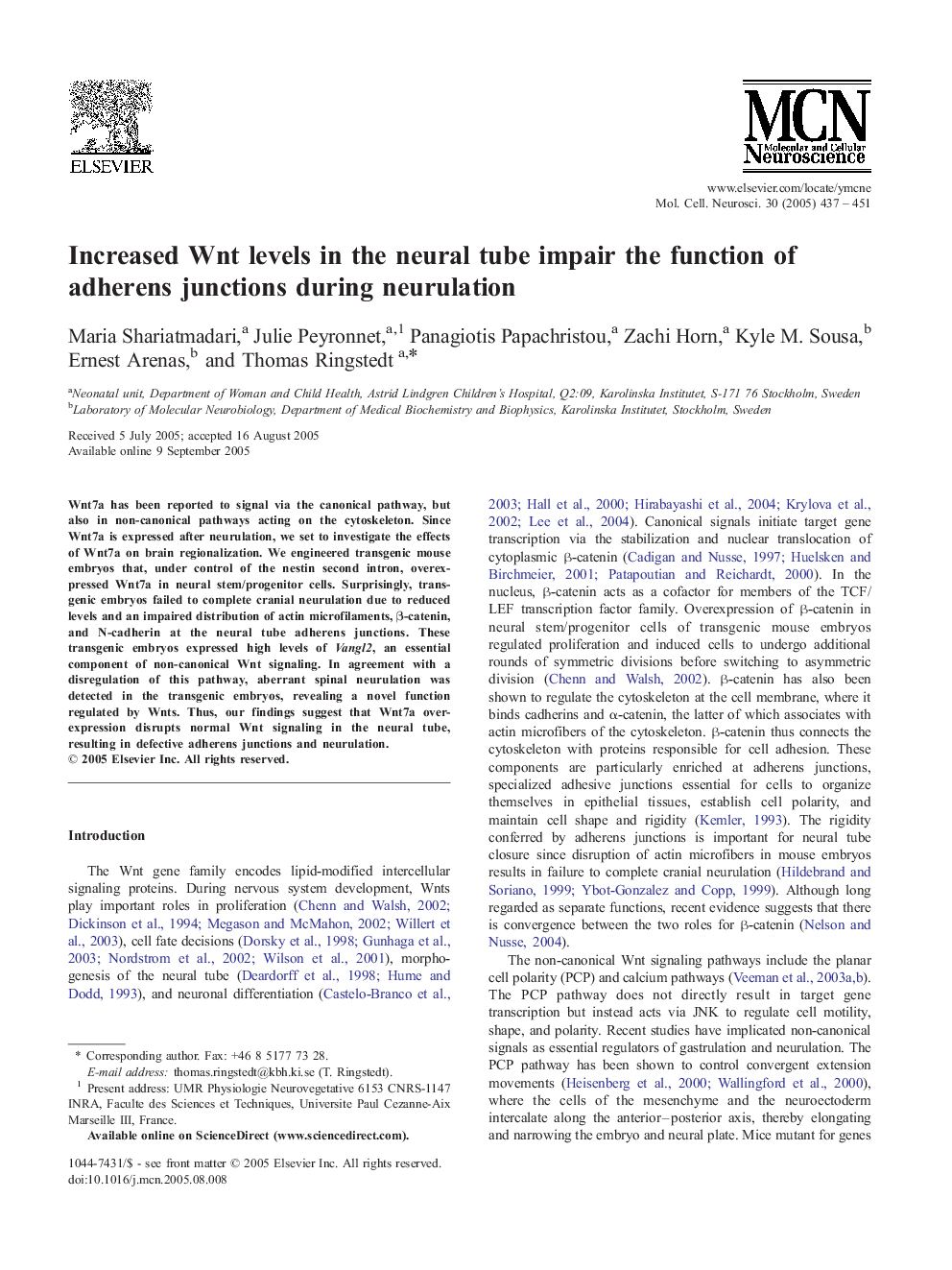| Article ID | Journal | Published Year | Pages | File Type |
|---|---|---|---|---|
| 10956812 | Molecular and Cellular Neuroscience | 2005 | 15 Pages |
Abstract
Wnt7a has been reported to signal via the canonical pathway, but also in non-canonical pathways acting on the cytoskeleton. Since Wnt7a is expressed after neurulation, we set to investigate the effects of Wnt7a on brain regionalization. We engineered transgenic mouse embryos that, under control of the nestin second intron, overexpressed Wnt7a in neural stem/progenitor cells. Surprisingly, transgenic embryos failed to complete cranial neurulation due to reduced levels and an impaired distribution of actin microfilaments, β-catenin, and N-cadherin at the neural tube adherens junctions. These transgenic embryos expressed high levels of Vangl2, an essential component of non-canonical Wnt signaling. In agreement with a disregulation of this pathway, aberrant spinal neurulation was detected in the transgenic embryos, revealing a novel function regulated by Wnts. Thus, our findings suggest that Wnt7a overexpression disrupts normal Wnt signaling in the neural tube, resulting in defective adherens junctions and neurulation.
Related Topics
Life Sciences
Biochemistry, Genetics and Molecular Biology
Cell Biology
Authors
Maria Shariatmadari, Julie Peyronnet, Panagiotis Papachristou, Zachi Horn, Kyle M. Sousa, Ernest Arenas, Thomas Ringstedt,
